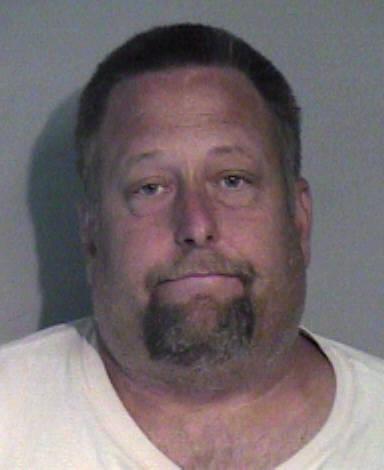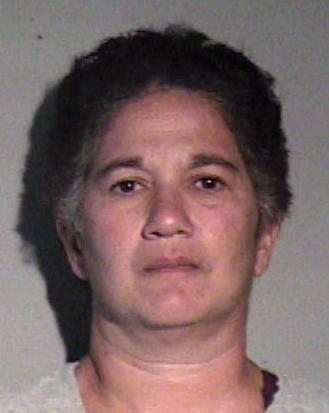MADERA COUNTY – After weeks of testimony in what was described by Judge Dale Blea as “the longest preliminary hearing I’ve ever been involved in,” the court heard closing arguments in the arson case against Kenneth Jackson and Allison Waterman on Monday, Oct. 28.
Jackson and Waterman were arrested on June 25 and charged with 31 counts of arson and conspiracy. Jackson was also charged with resisting arrest and assault on a peace officer.
Jackson’s attorney Craig Collins addressed the length of the hearing by asserting that it was not a plethora of evidence, but rather a lack thereof that caused the process to go on for so long.
“Much of this hearing has been spent trying to sort out all the mistakes in reports and testimony from Cal Fire,” said Collins. “They are biased, and were pressed to come up with something, so they focused in on my client.”
Collins continued his objection to the exclusion analysis used by investigators to conclude that these fires were arson.
“Most of the Cal Fire officers said that these fires were arson because they couldn’t exclude arson,” said Collins. “That type of reasoning may be suited for their purposes, but is not proper for a court. They can’t say ‘We have no evidence, but we can’t exclude it, therefore it’s arson.'”
Collins argued that investigators targeted his client, and ignored evidence that others may have started these fires.

The defense attorney also argued that the video monitoring was flawed, and that of the 800-plus vehicles captured on video, roughly one-third didn’t show license plates.
“They didn’t target anyone else’s vehicle,” said Collins. “That’s not evidence. If they had included every single car in their analysis, that would be evidence.”
He also attacked the prosecution’s presentation of linear and circular patterns to the fires as “ridiculous.”
“You could put 10, 20, 30 dots on a map, and they would all make some sort of pattern,” said Collins. “True pattern analysis would not only be findings attributed to my client, but to all the fires in the area. You can’t create a pattern by turning a blind eye.”
Collins told the court that there was absolutely nothing, other than having a 100% alibi for all these fires, that his client could have done to avoid being charged.
“He puts water on a fire, he’s guilty. He helps direct traffic, he must be guilty.”
As to the conspiracy charges, Collins urged the judge to “consider the totality of the circumstances. There is no evidence at all of any type of conspiracy. Only that they’re accusing my client and his wife of the same crimes.”

“What are the odds that these fires started by juveniles are right next to the Jackson/Waterman residence?” said Gross. “And they happened on Saturdays and Sundays and in the evening, when school is not in. But that’s not part of their investigation. They’re trying to make this case fit my client. There is absolutely no evidence that Ms. Waterman started these fires, just that she lives in the area.”
Gross argued that, while he was in no way saying that any Cal Fire personnel are responsible for any of the fires, there is more evidence that they did it, than there is that his client is responsible.
“The only thing that places my client at any of these fires is her own statements,” said Gross. “That’s when she became a suspect, after she chased one of their investigators. There is just no evidence against my client.”
Deputy District Attorney John Thackary then addressed the court, conceding that this case is mostly circumstantial, but pointing out that five different fire investigators agree that there is a pattern.
“Not all the fires over this 6-week period are being attributed to Jackson and Waterman,” said Thackary. “Investigators identified certain fires as being arson and as being lit by the same person. As we’ve heard several times in this case, fires don’t just start themselves. Somebody lit them and took off.”
Thackary also reminded the court that before or after every fire that was logged after the surveillance cameras were installed, Jackson’s vehicle was captured heading into or away from the area of every single fire.
“We know he passed by a camera on his way to Highway 41, then there were two fires on 41,” said Thackary. “He passed by the camera on 400 West and John Muir, then there were two fires reported along that route. Every time there was a fire, there was Jackson’s vehicle.”
Thackary also discussed the GPS tracking, where Jackson’s vehicle was tracked making a u-turn in an area where a fire was reported minutes later.
“He just drove there, turned around and headed back home,” said Thackary. “No place to go specifically, just driving around?”
As to Waterman’s involvement, Thackary reminded the court that after nine incidents that burned literally in her back yard, Waterman became aware of the surveillance on her street, and those fires stopped until the day of her arrest.
Thackary also dismissed the idea that investigators ignored other suspects.
“Not all fires were automatically attributed to Jackson and Waterman,” he told the court. “They took their time, looked at other suspects, and there was no evidence that linked other suspects to these fires.
“There have been only two fires since their arrest,” said Thackary. “What are the chances that they all just stop after six weeks of fires? There is sufficient evidence that the defendants were found to be in the area of these fires, and the pattern indicates that they were involved in all of them.”
At the end of closing arguments, Judge Blea thanked all the parties for their patience and professionalism throughout this very long process.
Citing his obligation to research and correctly apply the law in what he described as a “difficult and complex case,” the judge took the matter under submission, and will make his ruling on Nov. 4.
The bail remains set at $1,000,000 and $500,000 for Jackson and Waterman respectively, and the issue of bail will be revisited on the Nov. 4 court date.



